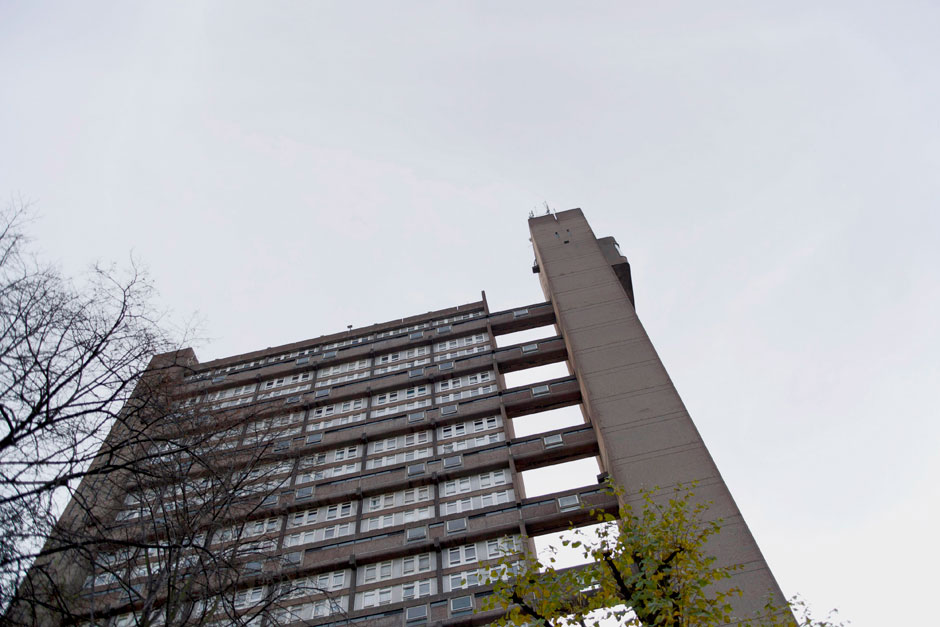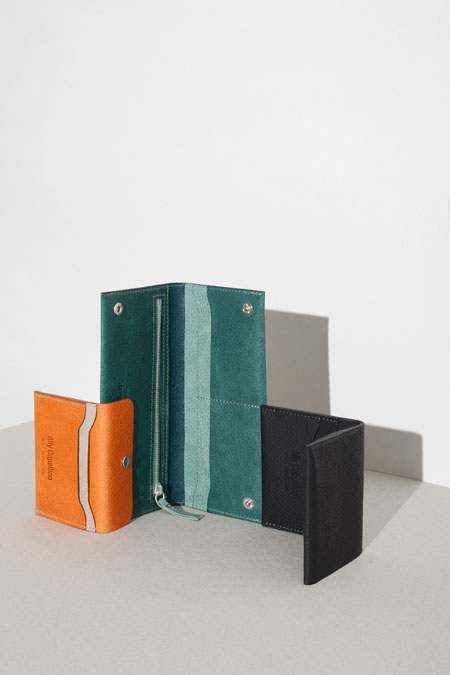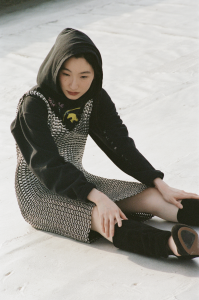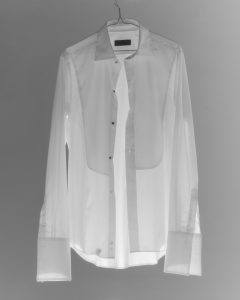The designer talks about her attraction to Erno Goldfinger’s Trellick Tower, and how its striking form and materials inform her new collection of accessories

Brutalist buildings are usually thought of as ugly, concrete monstrosities if they’re even thought about at all. The Trellick Tower was once dubbed “the terror tower”, synonymous with violence and crime. Now its one of the most desirable places to live in London and the backdrop for Ally Capellino’s Autumn / Winter collection campaign. It seems fortunes are changing for Erno Goldfinger’s beloved construct…
MW: Would you describe the Trellick Tower as beautiful?
AC: I don’t know if that’s the right word. Striking, interesting, powerful? It’s just the positioning of it with all the transport going around it as well: mainline to Paddington, mainline to Ally Capellino.
 MW: What about Brutalist architecture appeals to you?
MW: What about Brutalist architecture appeals to you?
AC: I’ve always liked it. I love the idea of the materials being right out there, which I think is very Ally Capellino in a way. We always concentrate on what something’s made out of first. That’s the inspiration, to try and expose the way something’s made because I think that’s really beautiful and really strong. They’re knocking down the children’s hospital in Hackney, which is almost unbelievable because it looks so strong that it seems physically impossible.
MW: How does your interest in Brutalist buildings translate into your collection?
AC: Architecture is something that’s always interested me and we wanted to make our lookbook more interesting this season, give it a little bit of relevance and context. We seem to have a lot of architects as customers. I think they like how we put things together, perhaps it’s the clean lines… That’s what an architect would love to be able to do and quite often they can’t. We make bags, so we only really answer to ourselves, but as an architect you answer to the London county council or whoever it is that’s in power at the time, making quite uneducated decisions visually about it. You’ve got people who don’t really know about the aesthetics of it, making the decisions. You can imagine a bunch of councillors thinking, ‘That’s a horrible building’, and yet they’re not the ones who are going to use it.
MW: Why do you think there has been a resurgence of interest in Brutalist architecture in recent years?
AC: I think that sheer modernism had to be moved on from. There’s a bravery about Brutalism that suits the idea of moving out of recession.
Looking down from the balcony of one of the tower’s 35 private flats (the rest are social housing) is certainly quite an overwhelming experience. It’s easier to understand the attraction from up here than down on the ground. London stretches out like a model village with toy cars, trains and figurines moving beneath. It makes the city seem more manageable somehow, less wild and uncontrollable. The owner of the apartment shares my awe, explaining that it was the view that really sold it, “I came back at night and when you see the view then, all the lights it’s just, just…” He leaves the adjective hanging between us. It’s not often a building will leave you speechless.
Images Agnes Lloyd-Platt




